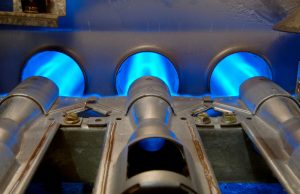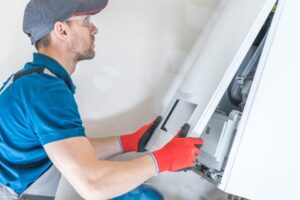Delayed ignition in Salt Lake City is usually accompanied by a loud banging or booming sound that resembles a small explosion in your gas appliance. In a furnace, this can be terrifying and should never be ignored.
What Causes Delayed Ignition
Delayed ignition usually happens when you first turn on your furnace, often after a long delay between use, so usually early in the fall or late in the spring when you don’t necessarily have it on every day of the week.
What happens is moisture builds up over the course of a period of inactivity and begins to corrode the firebox in your furnace. That corrosion builds up to the point that it starts to block the ports that feed gas into the burners. When these ports get blocked, the burners down the line cannot light and when you flip the switch, they won’t light immediately.
Of course, while rust and corrosion are a risk, lint and dust can be equally problematic (and are more common if you don’t heating system maintenance properly each fall). Sulfur build up is also a possibility, as it is left behind by burning natural gas. It will appear as a layer of white on the surface of the burners or the pilot light.
When all of this happens and the ports are not cleaned properly, gas will build up in the chamber after it is turned on and, when it finally ignites, create the small boom sound. It doesn’t just sound like an explosion – it is one – and if ignored, it can become incredibly dangerous.
Solving the Problem
Delayed furnace ignition is an easy problem to avoid. All you need to do is have your furnace cleaned properly before turning it on each fall. A technician will clean the burners and ports and remove any dust, lint, rust or sulfur buildup that might block ignition and cause a delay.
When replacing your furnace, look for a device with corrosion resistant materials. You can learn more about these when it comes time to replace your furnace from a technician. Most importantly, be careful. It may be a small problem now, but if left to build up over time, that small boom can become a much larger one. For help with this issue please call Design Comfort.
Continue Reading
Tags: Salt Lake City, SLC, UT
Posted in Furnace, heating system | Comments Off on Causes of Delayed Furnace Ignition




 So your heater is struggling, huh? If you have a technician on the way, then you’re in good shape! Unfortunately, though, we can’t always show up as quickly as you’d like–and on the chilliest of days, even 30 minutes can seem like a lifetime.
So your heater is struggling, huh? If you have a technician on the way, then you’re in good shape! Unfortunately, though, we can’t always show up as quickly as you’d like–and on the chilliest of days, even 30 minutes can seem like a lifetime.
